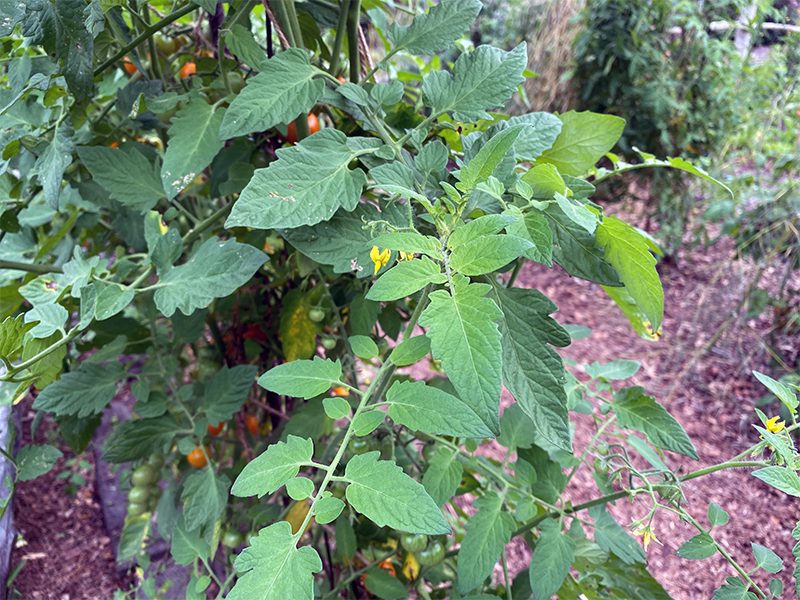What’s Wrong With My Tomato Leaves?
What’s Wrong With My Tomato Leaves?
At this time of year those who grow tomatoes often see signs that the plant isn’t thriving as they’d like. Holes in the leaves, yellowing of the tomato foliage, or brown, dying stems are common. Like damage on other plants, however, we should never assume that what we see is all related. When it comes to tomato plants some leaf problems are serious and need action, and others are cosmetic only and don’t affect fruit production.

Here are some problems typically seen on tomato plants:
- Leaves yellow and have black spots – usually from the bottom up. This is early blight. Remove yellow leaves and dispose of them away from the garden, and spray weekly with an organic fungicide.
- Leaves disappearing, especially from the top. This is a tomato hornworm; look VERY CLOSELY for a bright green, fat larva and feed it to the birds or relocate it to the woods.
- Curled leaves. This is caused by stress, usually wind but also very hot or very cold air temperatures. Be sure to water your tomatoes deeply less often, using a soaker hose or sprinkler, not hand-watering unless local watering bans only allow hand-watering.
- . Water deeply every 4 to 7 days depending on the weather. When the nights are cool and days below 85 you can water less often, but when you do water, be sure that the entire area around the plants get soaked down at least 12″. Usually hand-watering isn’t enough because people get bored before the plants are watered well, and they tend to direct water only at the base of the stem not out beyond the drip-line. Whenever possible – with the exception of containers – water with soaker hoses or a sprinkler not by holding the hose in your hand or using buckets. Water in the morning whenever possible so that the foliage dries quickly.
- Red foliage. This typically happens in the early spring and is a response to cold weather.
- Yellow plant all over. This indicates either over-watering or a nutrient deficiency. If you’re watering every day, and the soil is constantly wet, stop and only water every five days. Have a soil test if you think that it might be a nutrient problem. Soil test information here.
Posted in Problem Solving, Vegetables
Subscribe To Our Newsletter
Sign up for our weekly email about sales and events.
